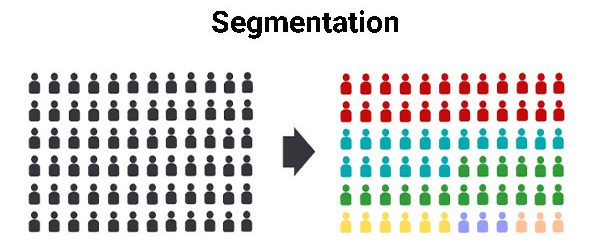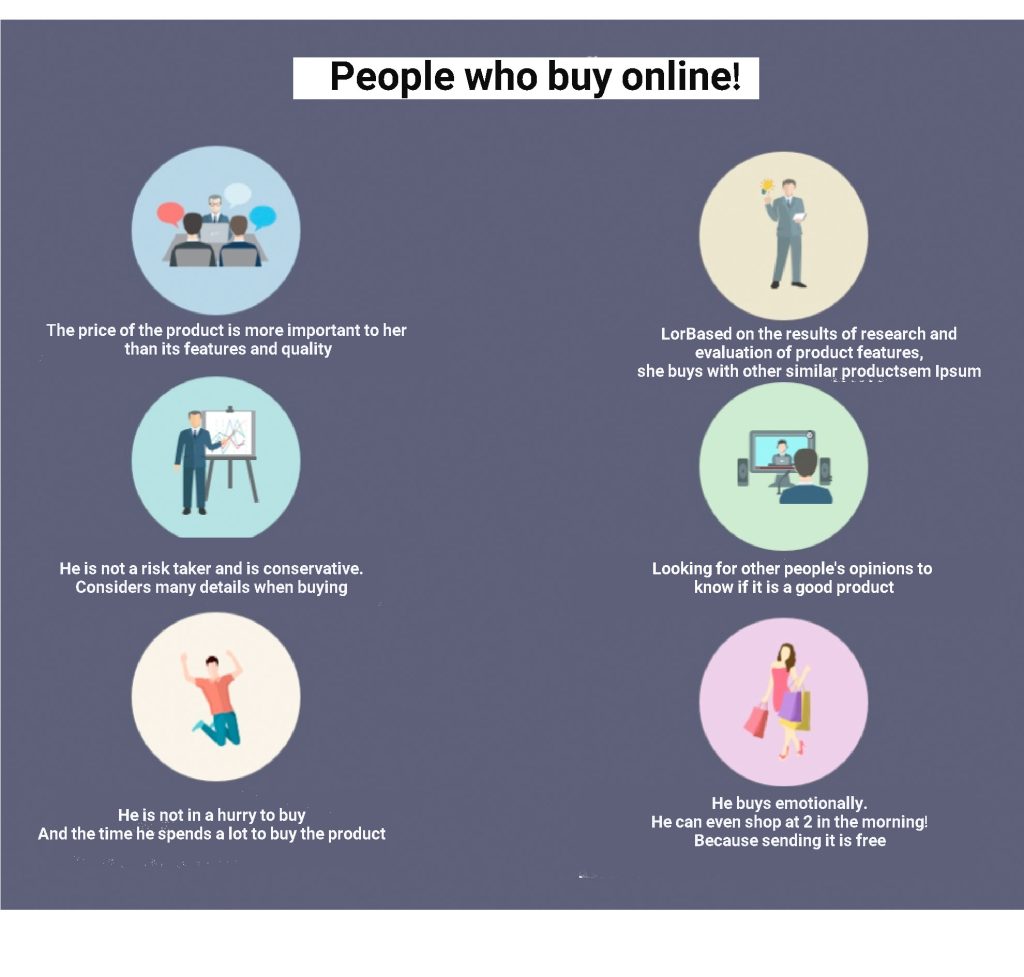Neither pounded kebab, nor pizza, nor black vegetables can make everyone happy!
This issue has made it difficult to give dinner; Because preparing several different dishes is expensive. It is expensive in this day and age!
But now if we know what the other party is interested in, wouldn’t we be comfortable?
The same issue is also true in the market; Because we don’t have enough money, manpower and necessary equipment to satisfy the whole market.
On the other hand, our product or service cannot satisfy everyone and many do not need it at all.
But in the market unlike the small family party, we are not dealing with one or two people; So what do we do?
This is where the STP marketing model comes in handy; A model that brings success and profitability.
If you agree, let’s see what this model is and how it solves your problem.
What is the STP marketing model?
Before anything, let’s see what STP stands for:
- Segmentation
- Targeting
- Positioning
These 3 words are the same 3 steps that the business must go through to attract its customers. Cutler believes that the STP marketing model helps us get our hands on a part of the market that is for us! how about
✔️ First stage: identifying distinct groups of buyers who have different needs and desires (market segmentation)
✔️ Second stage: choosing one or more groups (targeting)
✔️ The third stage: creating and presenting a unique offer (product) for each market segment in order to occupy a distinct position from competitors in their minds (positioning).
Let us agree with Cutler that it is not really possible to communicate with all customers in a large and diverse market. It is better to target a market that we can effectively serve.
This issue is also related to the accurate knowledge and understanding of consumer behavior; Knowing what makes each section different from the other. Identifying and satisfying the needs of each segment is the main key to success in marketing.
With these details, we can say:
STP is a marketing model that defines who and how to market your product.
Its formula is very simple:
Positioning = targeting + segmentation
You are almost familiar with the whole case; But what is meant by segmentation, targeting and positioning? Let’s get into the details!
What is meant by segmentation?
Market segmentation means dividing the market into well-defined segments.
Each market segment is a group of customers who have common needs and wants. The task of the marketing team is to identify the number and characteristics of different market segments and to decide on targeting one or more segments.

According to Cutler, there are 2 views on segmentation:
- Based on demographic, psychological and geographic characteristics
Proponents of this view, after segmenting the market, consider whether their needs, wants or behaviors and reactions to the product are the same.
For example, they examine the response of “young men”, “middle-aged men” and “older men” to “high car speed” as a competitive advantage.
- Based on attitude and behavioral considerations
Proponents of this view first look at how the consumer reacts to the benefits of the product. How does he use the product? Why and when does he use a product (brand)?
After segmenting the market, they check whether each group has the same characteristics or not.
For example, are people who choose “low price” of a car instead of “quality” similar in terms of demographic, psychological, and geographical location?
Cutler believes that regardless of which perspective you follow, the key to your success is understanding and recognizing the differences between market segments.
Now let’s see what variables and parameters we should consider in each model.
How to segment the market
We must know our audience like the back of our hands! How old is he? Where does he live? What is his job? How much does he earn? What is his reason and motivation for buying? Is he an online shopper or prefers to check the product up close?
For this reason, we consider 4 features along with the general variable:
Demographic
The reason why identifying audience demographics is so popular among marketers is that it often correlates with their needs and wants. On the other hand, it is easy to measure and identify them.
The most important parameters are: age, number of family members, income, education, occupation, religion, race, generation and nationality.
For example, when we know which stage of our target group is in their life, it becomes easier to identify their needs such as marriage, buying a house, buying a car, buying a game console, taking care of parents, taking care of children, divorce and others.
Let’s check an example for the role of understanding and identifying the amount of income? According to statistics, 53.9% of urban households have a private car; But this figure changes depending on the income. Only 13% of low-income deciles have a personal car, and this number reaches 87% for high-income deciles.
Kotler has mentioned this in the book “Marketing Management” that identifying these characteristics is necessary to estimate the size of the market and communication channels to attract the audience.
Geographical
We divide the market based on the geographical location of the audience (the place where our customer is present), i.e. province, city and neighborhood.
This will keep your marketing activities focused and not targeting someone who doesn’t have access to you.
On the other hand, it also determines the size of the market and you know what to offer to impress the audience.
For example, “providing all medical services in one place” or “free shipping” is suitable for attracting customers living in distant neighborhoods and cities.
Often times, geographic characteristics are combined with demographics to get a better understanding of the audience; For example, 28 to 30-year-old residents of Toronto are used to being active on Instagram, driving foreign and luxury cars, eating at restaurants and attending parties.
Disclaimer: This is just a hypothetical example and is not the result of research or data.
On the other hand, the weather of the city where your target audience lives, its population and even the geography of the place of residence (city, suburb or village) are important; Because they create difference and differentiation.
psychological
Here, we look at psychological characteristics such as personality types, beliefs, values, and lifestyle to better understand our audience.
The people we put in a group based on demographic and geographic characteristics can have different psychological characteristics.
In general, this type of segmentation is based on the following 2 questions:
- How do people think?
- What is their desire (main concern) in life?
Examples of these characteristics are eating habits, opinions and beliefs, as well as daily activities and hobbies.
For example, “health” is one of the main values in their lives (a segment of the market). “Excess weight” has occupied their minds day and night, and their main concern is “reaching the ideal weight with the lowest cost”. They are fond of “exercise at home” and their personality is “introverted”.
The important parameters in this segmentation are:
- personality (e.g., introvert, extrovert, emotional, creative, stubborn, and disciplined);
- life style;
- hobbies and daily activities (eg, favorite team, activities at home, activities outside the home, and favorite movie genre);
- Values.
behavioral
Some people believe that segmentation based on psychological characteristics makes us stay away from consumer behavior.
This is where behavioral segmentation comes into play; Where the attitude and the way of making decisions about the use of a product is the basis of segmentation.
The reasons for buying a product are not the same for everyone. On the other hand, not all groups seek the same interests and benefits; The benefit that the product brings.
In this segmentation, it is no longer important what kind of personality a person has, and his manner and behavior towards the product is checked.
3 important parameters of behavioral segmentation are:
- Buying and usage habits
Patterns and habits of people when shopping are different. Maybe 2 people buy the same product; But their purchasing model is not the same.
For example, one may be a researcher. This person tries to collect the necessary information using Google and social networks to make the best decision; But the second person is the one who is looking for a low price purchase more than anything else. For this reason, it is looking for “auction” and “discount” to buy.

Some people buy at a specific time and day; For example, buying coffee before arriving at work or barbecue on Friday afternoon. Some people prefer to shop during holidays such as “Eid Nowruz” or personal occasions such as “wedding”, “birthday” and “buying a new house”.
For example, some people only travel on vacation; But some people, regardless of this issue, try to see the world using cheap tours.
Another issue is the amount of use and consumption; Low-consumption, medium-consumption and high-consumption. The consumption of the third group is much higher than the other 2 groups, and marketers usually prefer them to the other 2 groups – especially the low consumption.
Of course, it may be more difficult to attract this group; Because he is either loyal to a specific brand or always looking for the lowest price.
- Expected advantage and benefit
When we buy something, we believe that this product will benefit us; But our belief is not the same as someone else’s belief.
Take sneakers, for example. For one person, lightness and quality of cumin may be important; But another person might just be looking to buy sports shoes of a famous brand. He believes that he should buy a product that reflects his characteristics and assets
- Awareness and ignorance
A group may be unaware of the existence of the product, some are informed, some are interested and some are enthusiastic about the product and intend to buy. Segmentation and recognition of these groups plays a large role in marketing programs and activities.
- Determiner
Who is the decision maker when buying? For example, most men choose and buy shaving equipment by themselves; But sometimes, the decision is based on the opinion of several people.
For example, a person may decide to buy a treadmill; But his wife, by researching and talking to her friend – who is an expert in this field – introduces him to alternative models. Finally, both people decide to buy the same model.
2 people have played 2 different roles in decision-making; But regardless of the opinion of both people, they cannot be attracted.
Of course, all these parameters (all 4 models) are different for B2B businesses. For example, they need to know about the type of industry, the size of the business and the location of the desired sector. On the other hand, what kind of services do they need and what are the characteristics of decision makers.
Since market segmentation is the first step of the STP marketing model, I tried to look at it from all angles. If something is missed, be sure to give us a ticket
Now let’s go to the second stage!
What does targeting mean in the STP marketing model?
Once the segmentation is done, you need to determine what segment(s) to target.
Kotler’s criteria for choosing the right parts are:
- measurable
The size, purchasing power and characteristics of the sector are measurable.
- significant
The sector should be large enough and profitable; That is, it should be the largest possible homogenous group that is worth pursuing and targeting with a proper marketing program.
For example, the production of cars for people who are less than 1.2 meters in height will not result in significant profit for car manufacturers.
- Achievable
Is it possible to reach this section to serve them? For example, American car manufacturers do not have access to Iranians; Because their entry into the country is prohibited.
- distinction
We separate 2 parts when their reaction and behavior are different. If they respond to marketing activities the same way, don’t separate them.
For example, if married and unmarried women have the same reaction to selling perfume, they should not be placed in 2 separate groups.
- applicable
You can have a specific plan and activity to attract and serve the desired sector.
In targeting, consider 2 issues: market appeal and business goals.
To determine the attractiveness of each sector, you must consider the access to that sector and the level of competition in it, along with the potential for growth, the level of profitability and also its risk.
For example, it is better for businesses to know how easy it is to change the opinion of the target sector to buy the product. Are they loyal to a particular brand?
Then see if it is reasonable to invest in that market segment according to the business goals.
It may be a very attractive part; But it doesn’t match your long-term goals (for example, they are looking for a cheap purchase) or maybe you don’t have the ability to provide value and serve it.
And finally, the third and last stage of the STP marketing model!
What is positioning?
Positioning is the design of the proposal and image of the business in order to occupy a distinct position in the mind of the target market.
was it hard I accept!
In simpler words, positioning determines how the business differs from its competitors and how it should fit in the minds of its customers.
For example, what do you remember after hearing the names of Porsche, Volvo and Tesla? Probably in that order: speed, safety and innovation.
In his book “Marketing Management”, Kotler points out that most marketers believe that they should advertise a benefit to the target market that they are known for.
In other words, every business should have “a sales pitch” and stick to it. Maybe that’s why “Crest” still points to the “property of protecting teeth against caries”.
The formation of this mental image of you makes the target market distinguish the product or service well from other competitors.
Of course, more than 2 positions can be occupied. For example, you may remember both safety and durability after hearing Volvo.
However, what is important is that people are convinced that your product has these 2 benefits (and more).
Any difference and distinction cannot occupy a powerful position in the customer’s mind. A difference is valuable when it meets the following criteria:
- be useful for the target sector;
- be prominent (no one has occupied this position before);
- to be able to show and portray the difference to the audience;
- be deterrent (competitors cannot repeat it);
- be profitable (introducing and presenting the difference for the company to be profitable).

Try not to change the position constantly, have a claim that is believable and do not seek too much to occupy different positions.
Not defining the position will make the target market look at you as one of hundreds of similar products.
To occupy the position, all marketing elements (product, price, distribution and promotion) must be in line with your positioning strategy.
For example, if you are going to claim the “highest quality” position, you cannot offer a “low price” product; Because low price is tied to low quality in people’s minds.
Also pay attention to the fact that your position in the mind of the audience is not always supposed to be in line with the product’s features. It can be the characteristic of the brand itself; For example, “reliable” like Japanese products!
STP marketing model, a model to win!
I tried to explain the STP marketing model in this article based on Kotler’s book; A three-part model that ends up occupying a different place in the mind of the target market.
If you remember, I mentioned the STP formula at the beginning of the article and didn’t say much about it:
Positioning = targeting + segmentation
But now it is well known how segmentation and targeting lead to achieving a specific position in the mind of the target market.
If you go through all 2 steps well, you will know how to create a different place for yourself in the mind of the target market.
What is the benefit for you? You establish a place for yourself in the mind of a part of the market that has the potential to achieve the most profit; So you can run hundreds of miles ahead of your competitors!

